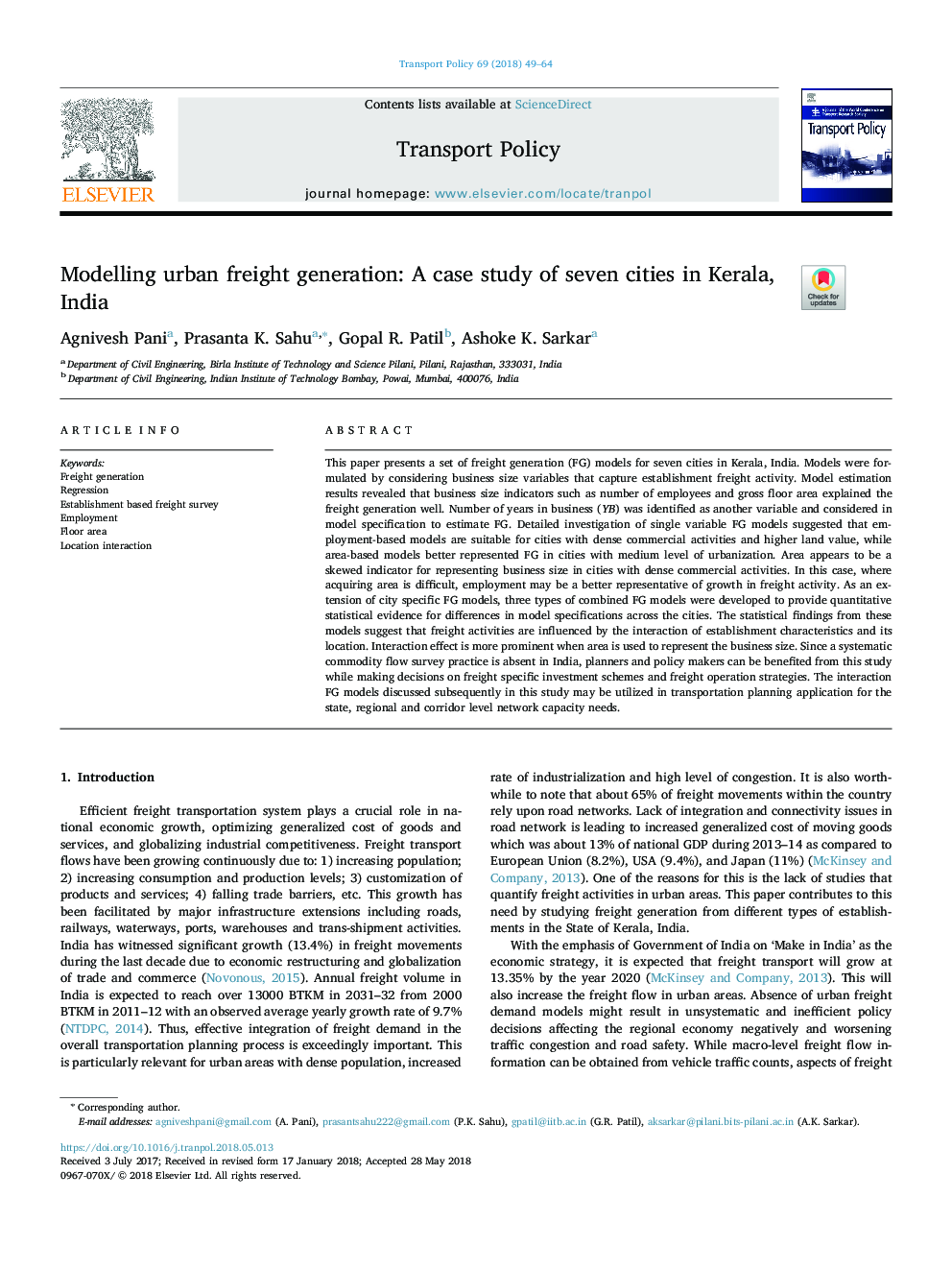| Article ID | Journal | Published Year | Pages | File Type |
|---|---|---|---|---|
| 7496833 | Transport Policy | 2018 | 16 Pages |
Abstract
This paper presents a set of freight generation (FG) models for seven cities in Kerala, India. Models were formulated by considering business size variables that capture establishment freight activity. Model estimation results revealed that business size indicators such as number of employees and gross floor area explained the freight generation well. Number of years in business (YB) was identified as another variable and considered in model specification to estimate FG. Detailed investigation of single variable FG models suggested that employment-based models are suitable for cities with dense commercial activities and higher land value, while area-based models better represented FG in cities with medium level of urbanization. Area appears to be a skewed indicator for representing business size in cities with dense commercial activities. In this case, where acquiring area is difficult, employment may be a better representative of growth in freight activity. As an extension of city specific FG models, three types of combined FG models were developed to provide quantitative statistical evidence for differences in model specifications across the cities. The statistical findings from these models suggest that freight activities are influenced by the interaction of establishment characteristics and its location. Interaction effect is more prominent when area is used to represent the business size. Since a systematic commodity flow survey practice is absent in India, planners and policy makers can be benefited from this study while making decisions on freight specific investment schemes and freight operation strategies. The interaction FG models discussed subsequently in this study may be utilized in transportation planning application for the state, regional and corridor level network capacity needs.
Keywords
Related Topics
Social Sciences and Humanities
Social Sciences
Geography, Planning and Development
Authors
Agnivesh Pani, Prasanta K. Sahu, Gopal R. Patil, Ashoke K. Sarkar,
